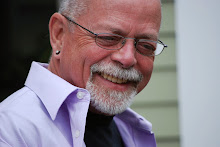Saturday, May 28, 2011
How was it there?
I intended that the three novels of the Stonewall Triptych be gay novels. When I was writing them, I imagined writing for men and women who had experienced what I was writing about, or something similar. I was going to tell the story of what was happening to the gay people in the small town of Cardiff or to the gay man who grew up in Columbia, South Carolina, or to the gay men and women in the Stonewall Inn on Christopher Street in Greenwich Village, in New York. And when it came time to choose the plot of the novel, I formulated it this way: Given the murder of my friend Bernie Mallett, what am I to do? Or, Given a homophobic culture in America in the 1940s and 1950s, how am I to learn to live? Or, Given brutal policemen in a homophobic city in 1969, how am I to behave now that the cops have come to Sheridan Square? I thought that most gay men and women would find all three of these novels familiar—and fertile—ground.
I wanted to write these three novels without reference to heterosexual persons, insofar as that was possible. My characters, for the most part, live inside a gay community or else they live alone. When a gay person picks up these books, I hoped he or she would feel that the world of each of these novels would seem familiar, and he would be acquainted with the issues the characters face and would recognize the outcomes at the end of each of these novels. I wanted Ceremonies, and Race Point Light, and Adam in the Morning to be about the lives of gay men and women who live today. And I wanted gay people to be able to say, That’s the way it was.
I wanted to write these three novels without reference to heterosexual persons, insofar as that was possible. My characters, for the most part, live inside a gay community or else they live alone. When a gay person picks up these books, I hoped he or she would feel that the world of each of these novels would seem familiar, and he would be acquainted with the issues the characters face and would recognize the outcomes at the end of each of these novels. I wanted Ceremonies, and Race Point Light, and Adam in the Morning to be about the lives of gay men and women who live today. And I wanted gay people to be able to say, That’s the way it was.
